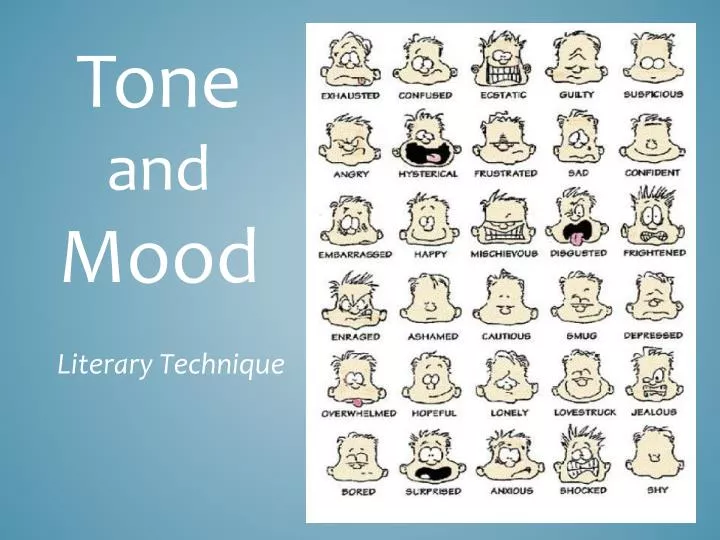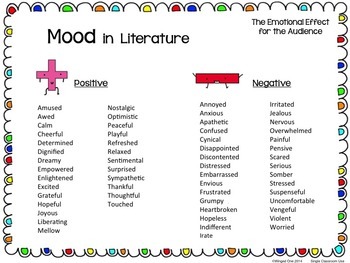

If this had been an old house, with creaking wood, and dark shadows, and heavily panelled walls, there might have been an eerie feeling. The others went upstairs, a slow unwilling procession. Example 2: And Then There Were None (Agatha Christie)

She is in as much pain for the reawakening of hope in her at the thought of being among the living, and the anguished mood of the poem evokes these emotions in the reader as well. This anguish is a result of the “promise” of being brought back to life on Earth and all its beauty for Eurydice. This is clear through her choice of words such as “arrogance,” “ruthlessness,” and “broken.” However, there is an overarching mood of anguish in the poem as well that evokes the same feeling for readers. establishes for the reader on the part of Eurydice is anger and resentment at Orpheus for his actions in determining her fate. Unfortunately, Orpheus looks back at Eurydice as soon as he reaches the surface, not waiting for her to do the same, and she is banished once again to the Underworld forever.

Orpheus has the chance to rescue Eurydice from the Underworld and bring her back to life on Earth, under the condition that he not look back at her until both of them are touched by daylight. gives Eurydice (a nymph in Greek mythology, daughter of Apollo, and wife of Orpheus) a voice to express her anger and resentment at her fate. I who could have slept among the live flowers I who could have walked with the live souls Here are some examples of mood in well-known literature: Example 1: Eurydice (H.D.) This allows the reader to make further connections with the literary work as the writer is able to express deeper meaning. Mood engages the reader with the narrative and helps them understand many aspects of a story on an emotional level. ToneĮstablishing mood in a story, poem, novel, or other fictional work is an essential literary device. In turn, if a story is set in a futuristic dystopia, readers may expect a mood of tension or hopelessness. For example, if a story is set in an idyllic pasture on a sunny day, readers will be inclined to expect a happy mood. Setting can have a distinct impact on the mood of a story. Here are some examples of how writers establish mood: SettingĪ story’s setting refers to its “physical” location and time frame in which it takes place. Though it may seem difficult to achieve mood in a story without being too overt or too subtle for readers, writers can rely on four techniques to craft this literary device. When writers establish mood, it should be consistent with the literary work so that the mood is not disjointed from the story yet remains emotionally accessible and resonant for readers. This response allows readers to experience emotion and connection within a story, making the literary work more meaningful and memorable. Mood is an essential literary device to bring cohesion to a story and create an emotional response in readers.


 0 kommentar(er)
0 kommentar(er)
